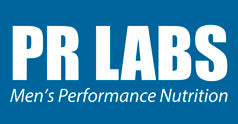What is Prostate Artery Embolization?
For men over 40, life can be great. You finally know who you are and have most likely settled down. Maybe you’re married, maybe not. You feel confident because your hair has the perfect amount of gray to complete the salt and pepper look, and life could not get any better.
Sounds pretty great, right? Maybe getting older isn’t so bad after all.
Aging is a natural process that has its ups and downs. On the one hand, you may have more world experience, but on the other hand, your body is changing, and you now have to start paying attention to things that you may not have thought about in the past. There are a lot of components to men’s health, but prostate health is one of the most critical pieces to overall wellness in men. If you haven’t had a conversation with your doctor about prostate health, you should.
Men are more likely to develop an enlarged prostate as they get older; 50% of all men in the United States are affected by benign prostatic hyperplasia (BPH) or an enlarged prostate by 60. Although the condition is rarely fatal, it can lead to more painful symptoms. However, there are ways to prevent and treat BPH, including prostate artery embolization.
Benign Prostatic Hyperplasia
According to The Urology Care Foundation, Benign Prostatic Hyperplasia (BPH) is when the prostate and surrounding tissue expand. As the prostate gland enlarges, it can squeeze the urethra, putting pressure on the bladder. During this time, the bladder wall becomes thicker and may lose the ability to empty itself, which can lead to unpleasant symptoms such as:
- Difficulty urinating Frequent urination (or feeling like you have to)
- Intermittent urination: stopping and slowing down several times while urinating
- Incontinence
- Weak stream: a weak urine flow
- Straining with urination: trouble starting to pass urine or feeling like you need to push or strain to urinate
- Pain with urination
- Dripping after urination
BPH is benign and does not lead to prostate cancer, but it is possible to have both simultaneously. Treatment for BPH is standard if symptoms are beginning to show. Some researchers believe that hormones are to blame for enlarged prostates, but there is no proven or specific cause.
Although specific causes are unknown, some men are at a higher risk of developing an enlarged prostate. Risk factors for BPH include:
- Age (BPH symptoms are rare in men under 40)
- Family History (you are more likely to develop BPH if your father had it or had any prostate problems)
- Lifestyle factors (men who are inactive or obese may have a higher risk of getting BPH)
Prostate Artery Embolization
Several treatments are available for BPH, such as medication, minimally invasive procedures, and surgery. The appropriate treatment plan will depend on several factors, but ultimately, your doctor will evaluate your prostate and design a treatment course or refer you to a specialist.
One of the treatment options is prostate artery embolization (PAE). It is a minimally invasive treatment that helps improve lower urinary tract symptoms caused by an enlarged prostate or BPH. PAE may not be necessary for everyone with BPH, but the procedure is typically recommended for men whose symptoms have become bothersome or painful.
The minimally invasive procedure is performed by an interventional radiologist– a doctor that uses X-ray images and other radiologic imaging for procedure guidance– and has a high success rate with more than 90% of men.
The procedure itself requires the interventional radiologist to insert a small catheter into the artery in the wrist or groin. The doctor then guides the catheter into the vessels that feed the prostate, restrict blood supply, and then releases microspheres (microscopic beads) into the artery. These beads travel to the prostatic arteries to block off the flow of blood that is causing enlargement of the gland.
This procedure has gained notoriety over the years (since 2012 when it was first performed) because of the high success rate and the reduced risk of sexual side effects that are common in other treatment options. PAE, unlike other treatments, does not affect sexual performance.
Prostate Health
Although there is no way to prevent BPH, there are many things that you can do to ensure excellent prostate health. Lifestyle changes can make a big difference when it comes to prostate health. Exercise and healthier eating can help you maintain a healthy weight and reduce your risk of heart disease.
Another great way to take care of your prostate health is to start taking supplements designed for men. If you are looking around for prostate supplements, you’ve come to the right place. PR Labs has a potent and effective supplement to support prostate health. Prost-P10x is a urologist-formulated natural prostate and urinary health support supplement. The formula is packed with antioxidants and natural ingredients that promote normal prostate and urinary function.
Remember that prostate health is critical to men's overall health, and the sooner you start making it a priority, the better off you will be!
Join Our Community & Save 10% Off Your First Order
We’ll send you a coupon code for 10% off your first order. Stay on our list
and we’ll keep you updated with tips for optimal health, new product launches, sales, and more!




